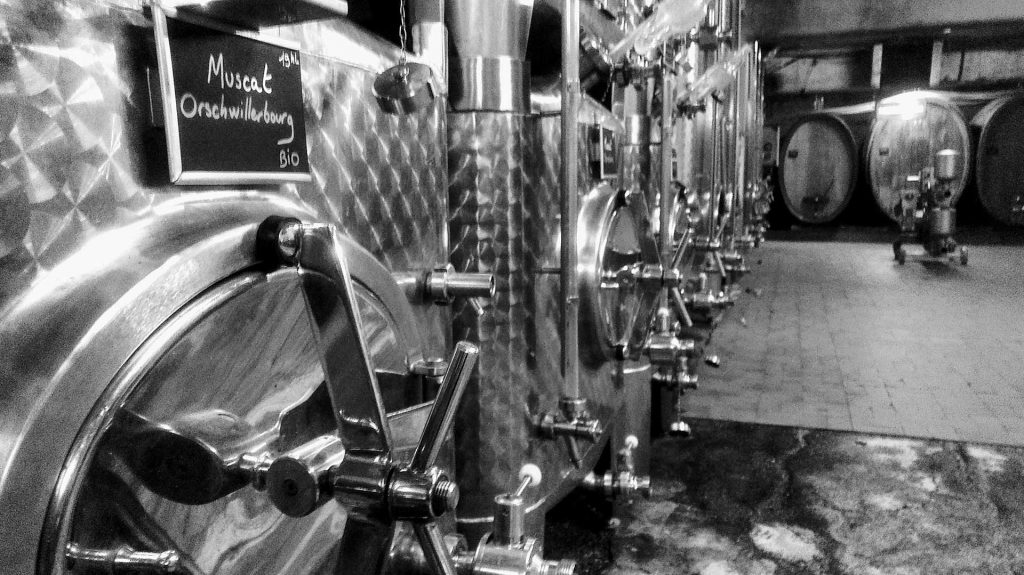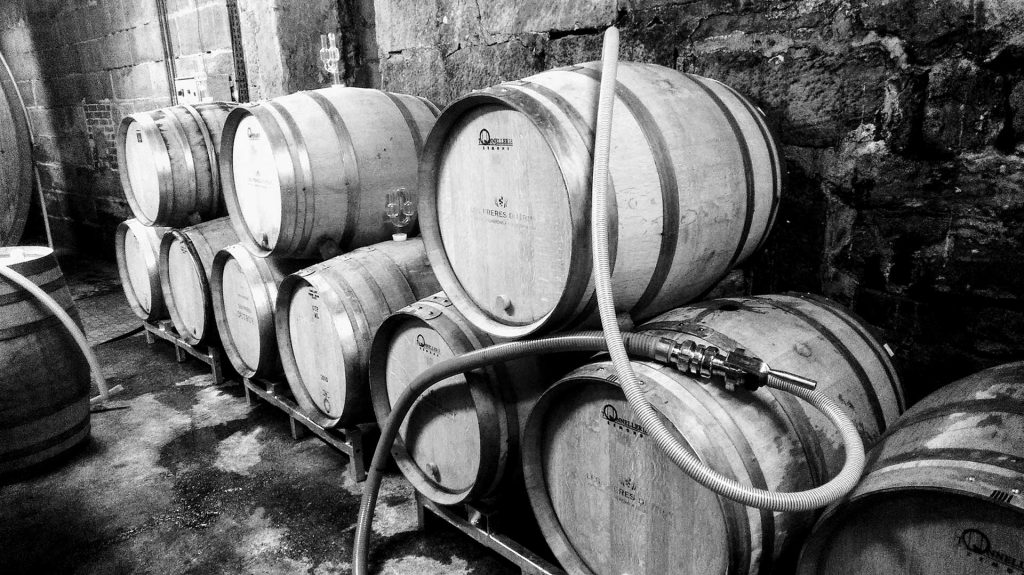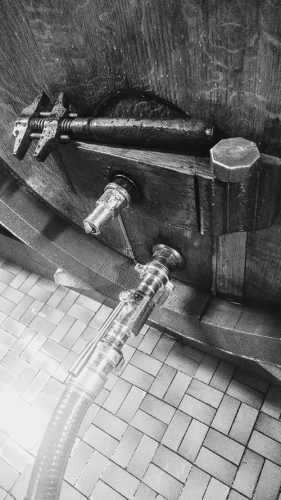Between Œnology and Alchemy
To conserve and express all the quality of the grapes and the authenticity of the terroirs brought out by the work in the vineyard, another cycle then begins in the winery. At the Domaine Robert Roth, vinification is performed at plot level, so as to conserve the personality of the various localities. The most noteworthy will continue alone right up to bottling, so as to conserve their particular character and create Lieux-Dit wines. The others will benefit from being crossed and blended to create the wines in the Les Terres de Grès range.
Purity and Minimalism
Vinification is a development, a complex course that must be accompanied rather than directed, if one wishes to remain as close as possible to the truth of the wine. This is why at the Domaine Robert Roth, œnological operations are minimized. No correction is performed on either the musts or on the wines themselves: the practices of chaptalization, acidity correction, yeasting, or fining have no place in the Domaine’s winery, as they serve no useful purpose. No other œnological input is added, except a little sulphur to conserve the brilliance and precision of the future wines. The work in the winery also follows the rhythms of the lunar calendar, in order to stimulate or calm the activity of the wines.



The wine: an ecosystem
The alcoholic fermentations are spontaneous, occurring through the diversity of the yeasts naturally present on the grapes and in the winery, where each batch is an ecosystem in itself, its fermentation lasting from a few weeks to several months. The malolactic or ‘second’ fermentation also occurs naturally for most of the wines; in all cases it is neither provoked nor stopped. Following the tumult of the fermentations, there follows a long, peaceful period of maturation on lees for a year, which may last up to two full years for certain wines. These lees, a veritable matrix that is both organic and mineral, will consolidate the wines and underscore the characteristics specific to the different terroirs (acidity, length, texture, etc.). And lastly, racking and filtration are only performed in the last few days just prior to bottling, to allow the wines the time to be fully formed in their wood or steel cocoons.
